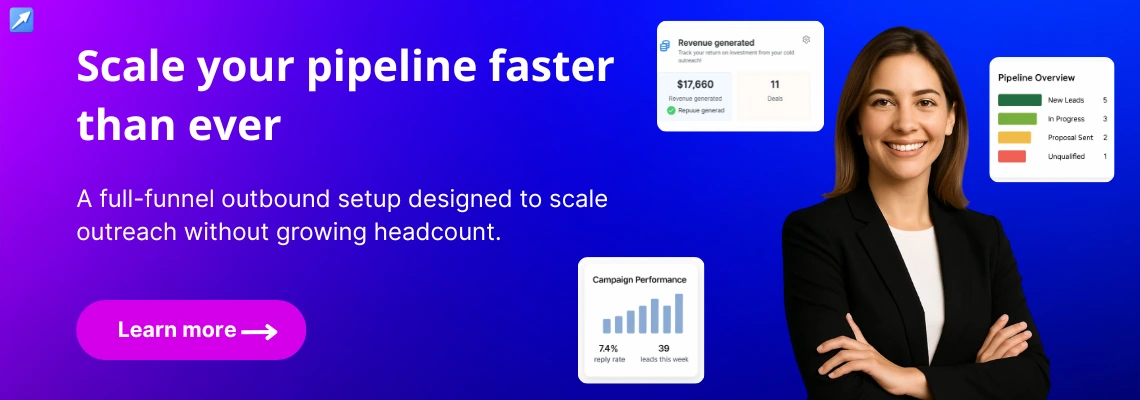Outbound Sales 101: 7 Proven Strategies for Small Teams to Build a Consistent Pipeline
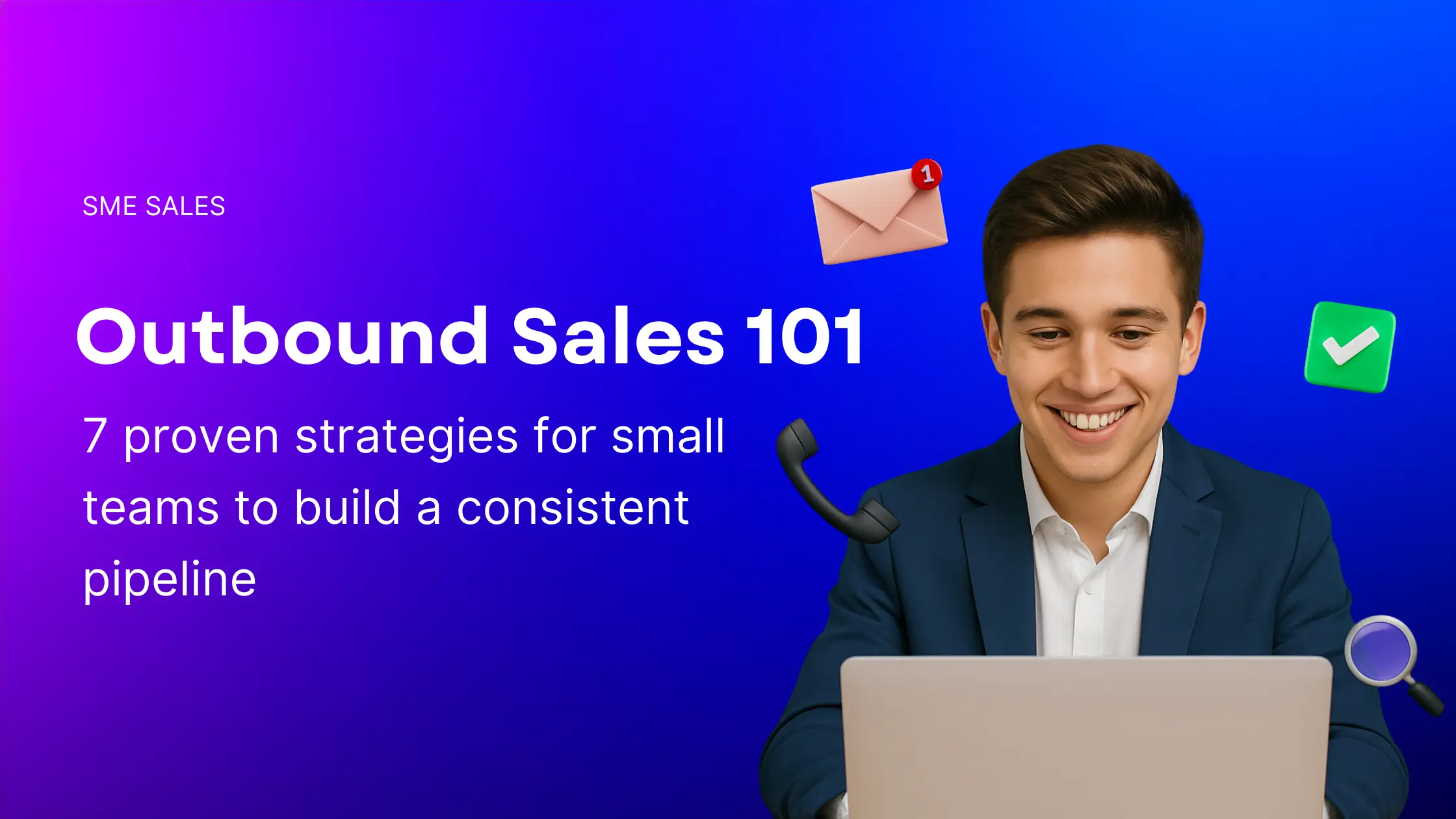
📅 Published: April 25, 2025 | ⏱️ 6–7 min read
Introduction
If you are running outbound with a small team, chances are you are wearing 3 hats, chasing cold leads, and barely keeping up with follow-ups. This guide is built to fix that.
For small B2B sales teams, every lead counts. And resources are limited. How can a lean team consistently fill the pipeline without burning out or breaking the bank?
The good news: outbound sales isn’t about having the biggest team, it’s about being smart and strategic.
In this blog we’ll cover seven battle-tested outbound sales strategies specifically designed for small teams (think 1-5 sales reps, or a founder-led sales team). Implement these tips to punch above your weight and keep those meetings and opportunities flowing in.
1. Define and Prioritize Your Highest-Value Targets
When your team is small, focus is your friend. The number-one mistake is trying to contact everyone and stretching yourself too thin. Instead, define your Ideal Customer Profile (ICP) clearly (industry, company size, role, etc.), and then prioritize accounts that best fit that profile.
How to segment B2B prospects for outbound sales:
- Tier 1: Dream clients >Best fit, high revenue potential. (Spend extra time personalizing for these.)
- Tier 2: Good fits >Likely to benefit from your solution but maybe slightly smaller or less ready.
- Tier 3: Long-shots> Use a more automated touch here, as these are lower priority.
By tiering your prospects, a small team ensures the most promising leads get the most attention. This targeted approach is vital: targeting the wrong audience is cited as a top sales challenge by many companies.
In a lean team, every minute spent on outreach should be to a high-value, likely-fit prospect. Use data (historical customer success, response rates, etc.) to keep refining who you target and who you deprioritize.
2. Craft Messaging That Speaks to Pain Points (Not Just Generic Intros)
Nothing kills outbound results faster than a generic, one-size-fits-all pitch especially when you’re reaching out as an unknown small company or team. Great outbound messaging centers on the prospect’s pain points and goals.
For each target segment or persona, brainstorm: What problem can we solve for them? What value can we offer? Your emails, call scripts, and LinkedIn messages should be laser-focused on how you address a specific pain or unlock a benefit.
How to write cold outreach messages that get replies:
- Use “You” More Than “We”: Lead with the prospect’s challenge.
For example, “Hiring sales reps is tough! You are likely struggling to get consistent outreach while also running daily operations…” before you segue into how you can help.
- Share Micro-Case Studies or Examples: Even if you’re a small outfit, use any relevant results or experiences.
“We helped another [industry] client double their demo bookings in 60 days” is a compelling line if true. If you lack formal case studies, reference industry stats or outcomes (“Studies show XYZ – we can help you achieve that.”).
- End with a Question or Call to Action: Make it conversational.
Try a question like, “Is improving [XYZ metric] a priority for you this quarter?” or a simple CTA: “Open to a quick chat next week?” This invites engagement rather than a hard sell.
The key is to avoid sounding like a templated marketing email. Small teams often have the advantage of being more agile and personal- let that shine through. Show prospects you get their problem and you have a solution.
3. Embrace Multi-Channel Outreach to Boost Response Rates
With limited manpower, you want to maximize your chances of connecting with each prospect. That means not putting all your eggs in one basket. Use multiple channels: email, phone, and LinkedIn in your outbound strategy. This multi-channel approach can increase your contact rate significantly.
Why multi-channel? People have different communication preferences. Some busy executives respond quickly to a well-crafted email, others might ignore email but pick up a phone call, and some live on LinkedIn. Reaching out in varied ways ensures you meet prospects where they are most comfortable.
Example of a multi-channel outbound sales cadence:
- Day 1: Send a personalized email to your prospect.
- Day 3: If no response, send a connection request on LinkedIn (with a brief note referencing your email or a common interest).
- Day 5: Follow up with a second email or a LinkedIn message if they accepted your request.
- Day 7: Try a quick phone call. Even a voicemail saying “Hi [Name], I sent a couple notes – wanted to speak about [value prop]. I’ll email you the details again” can prompt a reply.
- Day 10+: Continue with another email or LinkedIn touch, spacing out further follow-ups over the next week or two.
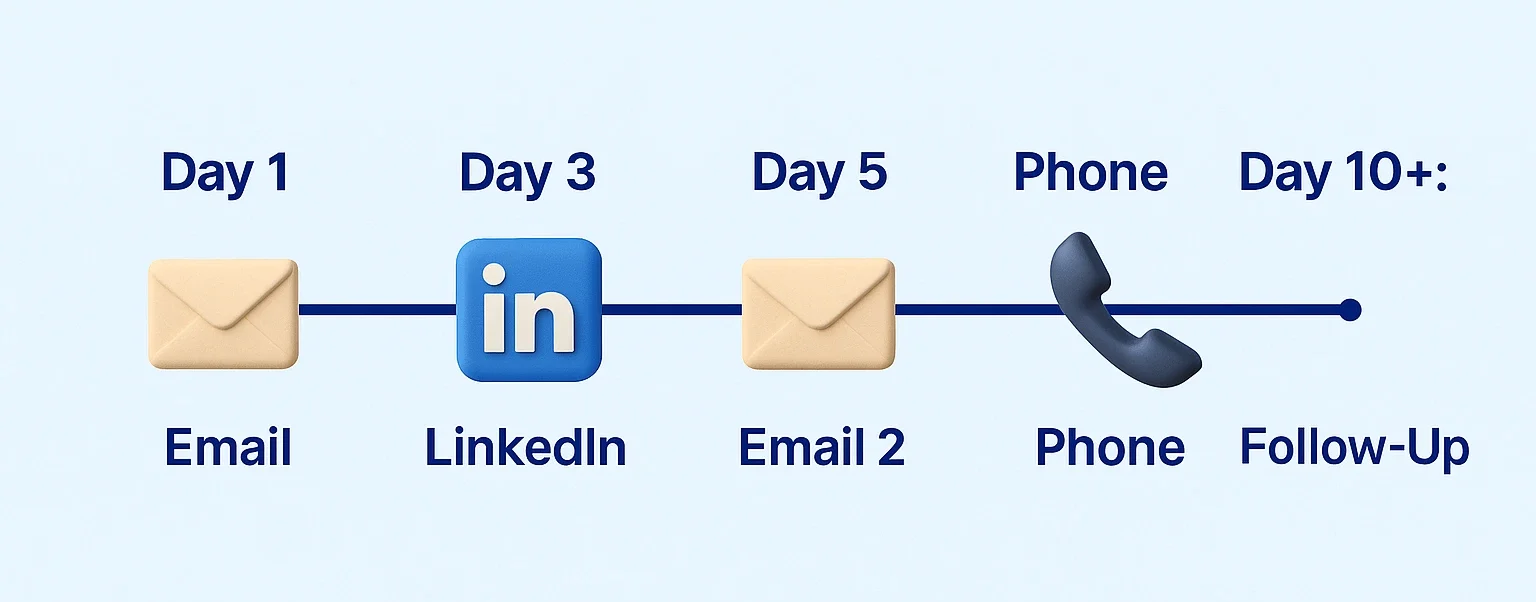
By spreading touches across channels, you create multiple “entry points” for a conversation. Importantly, keep your messaging consistent (so each touch builds on the last) but not copy-pasted identical. For instance, an email can be detailed, while a LinkedIn message might be shorter and more casual.
Many small teams see success with this approach because it doesn’t require more prospects, just more persistence and creativity with each prospect. Remember, your competition may give up after one channel attempt. You won’t – which leads us to…
4. Be Persistent: Follow-Up is Your Secret Weapon
“Your follow-up doesn’t need to be pushy! It just needs to be persistent and useful.”
If there’s one outbound sales superpower for small teams, it’s tenacious follow-up. You might contact fewer people than a big team, but you can outwork them in follow-through.
Why? Because most salespeople drop off too soon. 44% of salespeople give up after a single follow-up attempt, yet research shows it often takes 5+ touches to get an initial meeting. Persistence pays.
Follow-up strategies that improve outbound reply rates:
- Schedule Your Follow-Ups: Use reminders (via a CRM or even calendar alerts) so no potential lead falls through. Treat follow-ups as non-negotiable tasks, not optional.
- Add Value Each Time: Make every touch worthwhile. Share a short insight, a link to a relevant article, or a quick tip. For example: “Following up to share a 2-minute read on effective lead gen – thought of you when I saw this.” This way, your follow-ups aren’t just reminders, they’re little nuggets of value.
- Use Various Formats: Alternate between channels (as above) and vary the content. One follow-up might be a bulleted list of benefits tailored to them; another could be a customer quote or testimonial; another might simply reiterate your offer to help.
- Stay Polite and Patient: Always maintain a helpful tone. Something like, “I know things get busy. Just circling back in case this slipped through,” shows you understand their world. You can be persistent and empathetic.
A small team can absolutely outshine a larger one in follow-up diligence. By being one of the rare folks who follow up 5, 6, 7 times (politely!), you’ll catch prospects that others miss. One closed deal from consistent follow-up can justify dozens of polite pings.
5. Leverage Tools and Automation Wisely
You might not have a huge tech stack, but a few affordable sales tools can significantly amplify your team’s output.
The goal is to automate busywork so your limited human hours focus on high-value activities (like personalizing emails or talking to interested leads).
Best outbound sales tools for small teams:
- Email Sequencing Software: Tools like Mailchimp, Mixmax, or Apollo can automate email follow-up sequences. You can set up a series of emails (with personalization tokens for names, companies, etc.) that send automatically if a prospect doesn’t reply. This ensures no follow-up is forgotten, and saves time on manual emailing.
- CRM or Lead Tracker: Even a basic free CRM (HubSpot, Zoho, etc.) helps keep track of interactions and schedule tasks. As a small team, you need visibility into who was contacted when. A CRM will remind you that “Lead X” hasn’t responded to Email 2 – so it’s time for Email 3 or a call.
- Data and Dialer Tools: If cold calling is part of your mix, tools like auto-dialers or VoIP apps can save time calling and leaving voicemails. Similarly, a tool like LinkedIn Sales Navigator can streamline lead research with advanced filters.
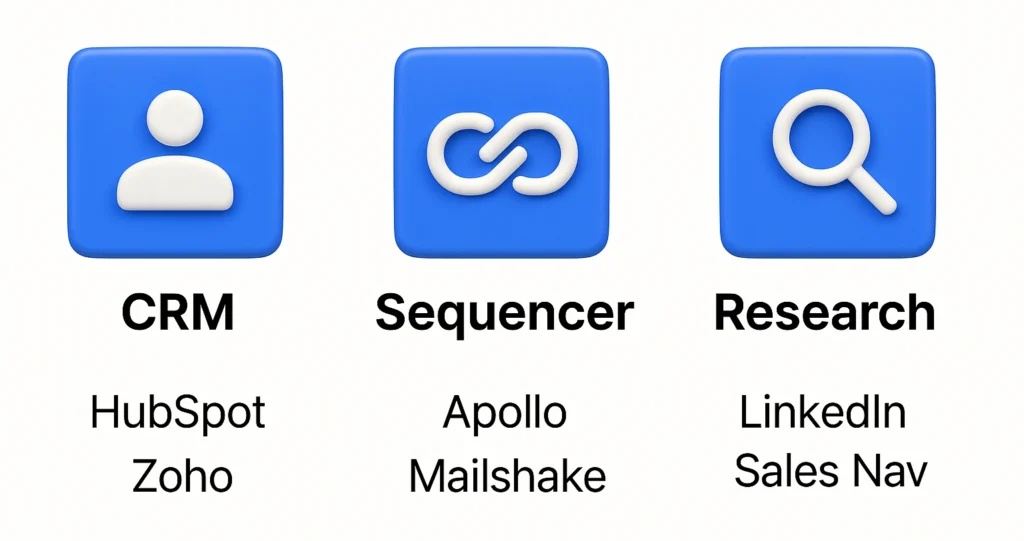 A word of caution: automation is great, but don’t let it make your outreach sound automated. Always review automated emails and tweak language to feel human.
A word of caution: automation is great, but don’t let it make your outreach sound automated. Always review automated emails and tweak language to feel human.
The power of a small team is often the personal touch. Maintain that even as you scale your efficiency with tools.
6. Track Key Metrics and Continuously Improve
To make these strategies really pay off, you need to track your results and learn. In outbound sales, data is your friend even for a team of one or two. By monitoring a few key metrics, you can spot what’s working and fix what’s not.
Key outbound sales metrics to track and improve:
- Contact Rate: What percentage of prospects did you manage to engage (replies or conversations) out of those you reached out to? If it’s low, maybe your targeting or messaging needs adjustment.
- Meeting/Demo Rate: How many of those engagements turn into scheduled meetings? This shows how effective your pitch and CTA are.
- Conversion Rate to Opportunity: Of meetings held, how many convert into real sales opportunities or proposals? If this is low, perhaps the quality of leads or your discovery calls could improve.
- Sales Cycle & Win Rate: As deals progress, track how long it takes to close and what percent you win. This might be more relevant once you have a decent number of deals in motion, but it informs your outbound ROI.
For a small team, even capturing data in a spreadsheet can work. Update it weekly. Then, have a quick review meeting (even if it’s just you and one colleague) to discuss: “We only booked 3 meetings this month vs 5 last month. Why? Fewer outreach? Worse responses? Did a big campaign underperform?”
This practice of analyzing results will highlight issues (like a certain email template underperforming) that you can fix fast.
One big advantage of small teams is agility. If the data shows an approach isn’t working, you can pivot your strategy next week. There’s less red tape than in a big org. Keep a test-and-learn mindset. Try new email copy, experiment with send times, test a different value prop and let the metrics guide you.
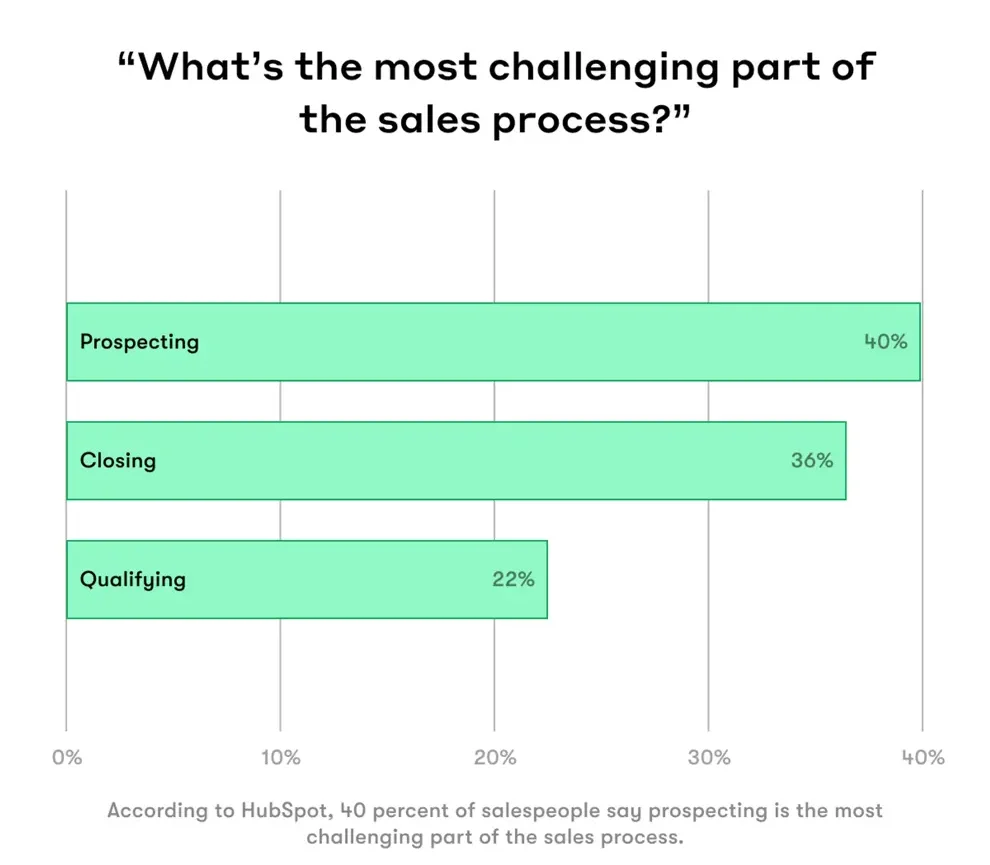
Figure: Prospecting is often the hardest part of sales. In one survey, 40% of salespeople said prospecting is the most challenging part of the process, compared to closing (36%) and qualifying (22%). This is why focusing your small team’s efforts on targeted, quality prospecting is so critical.
By tracking outcomes, you also get to celebrate small wins: “Our meeting rate went up 10% after we personalized the subject lines – great!” These insights keep the team motivated and constantly improving.
7. Consider Outsourcing (or External Help) for a Boost
Even with all the above efficiencies, there’s a limit to how many hours your small team has. If you find your bandwidth maxed out or need to accelerate results quickly, outsourcing part of your outbound can be a smart move. This doesn’t mean replacing your team, it means augmenting it.
How to outsource outbound sales as a small team:
- Outsourced SDR/Appointment Setting Services: You can engage a service (like Rev-Empire’s SME Sales Outreach solution) that specializes in booking meetings for you. They act as your extended SDR team, handling prospecting and cold outreach using proven workflows. This can rapidly increase your pipeline without the time and expense of hiring internally.
- Freelance or Part-Time Help: If a full service is too much, even hiring a freelance SDR or a part-time salesperson to help with cold calls or lead research can lighten the load.
- Consulting and Playbooks: Short on strategy? Consulting firms or coaches can provide outbound playbooks tailored to SMEs, train your team on best practices in a few sessions, and set you up for success.
Outsourcing isn’t “all or nothing.” Many growing companies use a hybrid model, a small internal team plus an external agency to scale their outreach. The internal team focuses on high-priority accounts and nurturing hot leads, while the external team keeps fresh leads coming in.
This can be very cost-effective, because you’re essentially getting experienced sales development on-demand, without full-time salaries and overhead.
For instance, outsourcing the top-of-funnel work (prospecting, initial outreach) can free your core team to spend more time on selling and closing, where they add the most value.
Remember that inside sales stat: reps spend only about 33% of their time actually selling on average, with the rest eaten by admin and prospecting. By outsourcing, you reclaim some of that lost time for your team to focus on calls and deals that only they can close.
Before choosing an outsourcing partner, do your homework: ensure they understand your market, can represent your brand well, and have a track record. When done right, bringing in external help can be the catalyst that multiplies your small team’s efforts into big results.
Consistency is Key for Small Team Success
We’ve covered a lot.
From targeting and messaging to follow-ups, tools, metrics, and even outsourcing. These seven strategies boil down to one theme: consistency.
A small team that is consistently targeting the right prospects, delivering tailored messages, following up diligently, and constantly refining will outperform larger teams that lack focus or discipline.
Don’t be discouraged by size. In outbound sales, a lean, mean team that executes well can win deals against even much larger competitors. By implementing these strategies, you’ll build a reliable pipeline engine that grows with you.
Before long, you’ll go from worrying about “How do we find leads?” to “We have more calls than we can handle!” – a good problem to have.
Next Steps: To help you put these strategies into action, we’ve created a free B2B Outreach Playbook for small teams.
It includes real messaging examples, a customizable outreach sequence, and a follow-up script you can adapt to your pipeline. Download the playbook here and start building your outbound engine today.
Here’s to more replies, better meetings, and steady growth for your small but mighty team.
Here’s a consistent pipeline and steady growth for your small but mighty team!
If you are ready to scale pipeline without scaling headcount, we can help you build outbound systems that convert.
Reach out to us at contact@rev-empire.com
Categories
Recent posts
Share on socials


